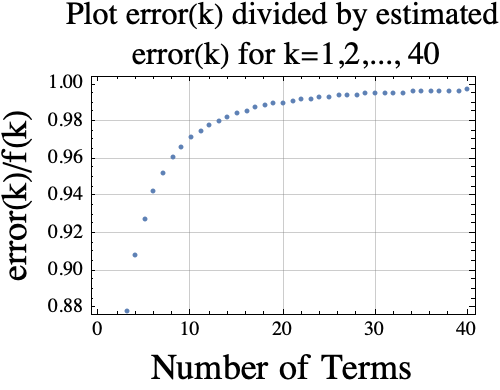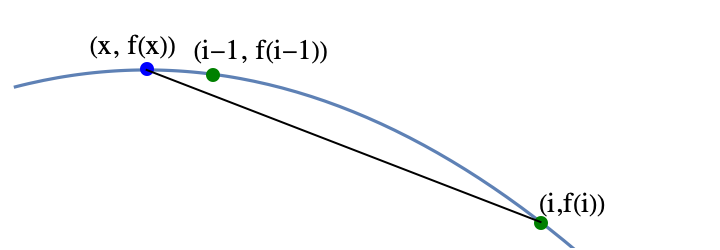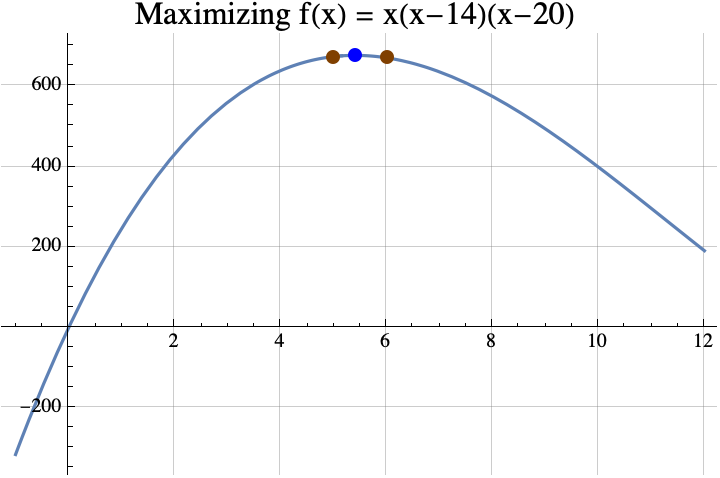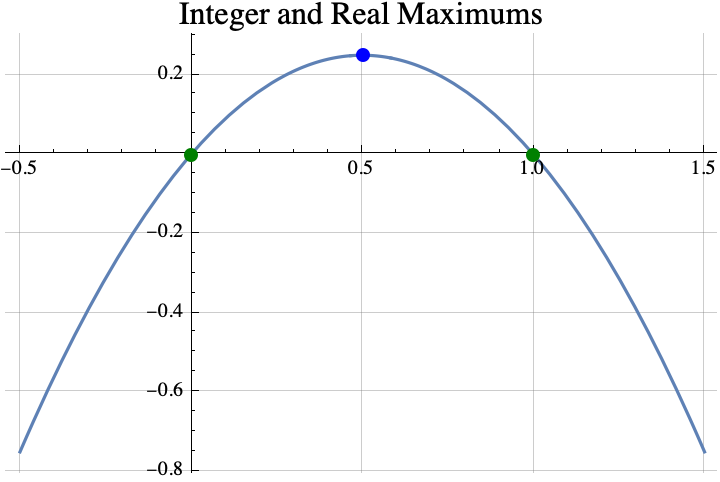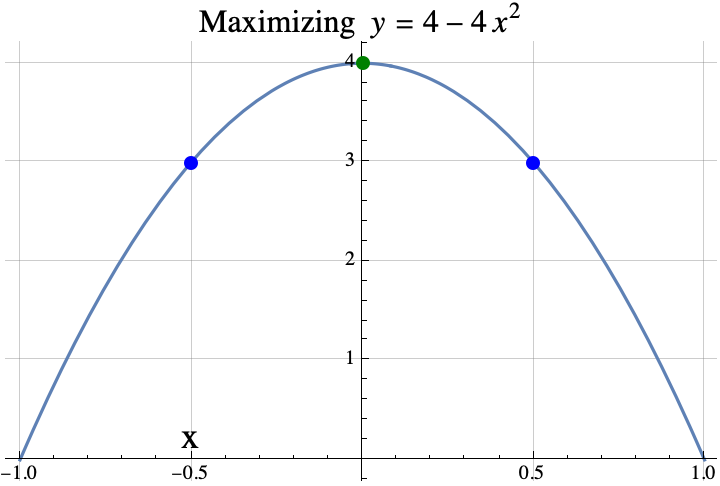Professor Peter Griffin discovered a nice theorem about the best way to count cards in Blackjack. (See the appendix in his book “Theory of Blackjack”). In this note, we review the theorem and reproduce his proof with more detail.
Suppose that you have a wagering game like blackjack which is played with a deck of cards. If you remove some cards from the deck, then the expected value of the game changes. Griffin found an easy formula for estimating the change in expectation caused by the removal of the cards. His formula depends on $E_j$ which is the change in expectation of the game when removing only the $j$th card from the deck.
Assume that the game never requires more than $k$ cards and the deck has $n$ cards in it. Obviously $n\geq k>0$. There are $m = {n \choose k}$ subsets of the deck $I_1, I_2, \ldots, I_m$ that contain $k$ cards each. Let $y_i$ be the expected value of the game played with the card subset $I_i$. We would like to estimate $y_i$ based on the cards in $I_i$.
We can create a linear estimate of $y_i$ by creating a vector $b=(b_1, b_2, \ldots, b_n)$ where $b_j$ is the “value” of the $j$th card. More specifically,
$$
y_i \approx \sum_{j\in I_i} b_j.
$$
Griffin found that the correct formula for $b_j$ is simply $$b_j = (\mu – (n-1) E_j)/k$$ where $\mu$ is the expected value of the game with a fresh deck. Using this value vector $b$ minimizes the squared error of the estimator. This formula is remarkable both for its simplicity and the fact that $k$ only plays a small roll in the calculation.
Griffin’s Theorem Let the error function $e:R^m \rightarrow R$ be defined as
$$
e(b) = \sum_{i=1}^m \left( y_i – \sum_{j\in I_i} b_j \right)^2 .
$$
Then $e(b^*) = \min_{b\in R^m} e(b)$ is the unique global minimum of $e$ where
$$
b^*_j = (\mu – (n-1) E_j)/k
$$
and $\mu$ is the expected value of the game with a fresh deck.
In the theorem above, $e$ is the sum of the squared errors in the linear estimate of the expected value of the game. In order to prove the theorem, we need two lemmas.
Lemma 1 If $\tilde{y}_j$ is the average expectation of the $k$ card subsets that do not contain card $j$, $\bar{y}_j$ is the average expectation of the $k$ card subsets that contain card $j$, and $\mu$ is the expectation of the game with a fresh deck, then
$$\mu = \frac{k}{n}\; \bar{y}_j + \left(1- \frac{k}{n}\right)\tilde{y}_j$$
and
$$\bar{y}_j = \frac{n \mu – (n-k) \tilde{y}_j}{k}.$$
The short proof of this lemma is left to the reader.
Lemma 2
Suppose for $j = 1,\ldots, n$,
$$(2.1)\quad b_j + \alpha \sum_{i=1}^n b_i = \gamma_j.$$ Then
$$ b_j = \gamma_j – \frac{\alpha\; n\; \bar\gamma}{1 + n \alpha}$$
where $\bar\gamma = \frac1n \sum_{j=1}^n \gamma_j$.
Proof: Sum both sides of equation (2.1) to get
$$
n \bar{b} + \alpha n^2 \bar{b} = n \bar{\gamma}
$$
where $\bar{b} = \frac1n \sum_{j=1}^n b_j$. Then,
$$
\begin{aligned}
\bar{b} + \alpha n \bar{b} &= \bar{\gamma} \\
\bar{b} &= \frac{\bar{\gamma}}{1+ n \alpha}.
\end{aligned}
$$
Applying that to equation (2.1) yields
$$
\begin{aligned}
b_j + \alpha \sum_{j=1}^n b_j &= \gamma_j \\
b_j + \alpha n \bar{b} &= \gamma_j\\
b_j + \alpha n \frac{\bar{\gamma}}{1+n \alpha} &= \gamma_j\\
b_j &= \gamma_j – \frac{\alpha\; n\; \bar{\gamma}}{1+n \alpha} \\
\end{aligned}
$$
which completes the proof of the Lemma.
Now we can prove Griffin’s Theorem.
Proof: Let the matrix $X$ be defined by $X_{ij} = 1$ if card $j$ is in set $I_i$ and $X_{ij}=0$ otherwise. We wish to minimize the sum of the squared errors. If we assume that the value of the $j$th card is $b_j$, then we can estimate the expectation of the game played using only card subset $I_i$ with
$$
\sum_{j\in I_i} b_j.
$$
The error of this estimate is $(y_i – \sum_{j\in I_i} b_j)$. The sum of the squared error is
$$
e(b) = \sum_{i=1}^m \left( y_i – \sum_{j\in I_i} b_j \right)^2.
$$
Noice that $\sum_{j\in I_i} b_j = x_i \cdot b$ where $x_i$ is the $ith$ row of $X$. So,
$$
e(b) = \sum_{i=1}^m \left( y_i – \sum_{j=1}^n X_{ij} b_j \right)^2 = \| X b – y \|^2.
$$
In other words $e(b)$ is the square of the distance between $y$ and $Xb$. The Gauss-Markov theorem provides a nice solution for the $b$ which minimizes this distance
$$
b^* = \left(X^T X\right)^{-1} X^T y
$$
where $X^T$ indicates the transpose of $X$. Hence,
$$
(1)\quad X^T X b^* = X^T y.
$$
Let $C=X^T X$. It turns out that $C$ has a very simple structure.
$C_{ij} = x_i^T x_j$ where $x_i$ and $x_j$ are the $i$th and $j$th columns of $X$, so
$$
(2) \quad C_{ii} = x_i^T x_i = { n-1 \choose k-1},
$$
and if $i \neq j$,
$$
(3)\quad C_{ij} = x_i^T x_j = { n-2 \choose k-2}.
$$
So, applying equations (2) and (3) to $i$th row of matrix equation (1) gives
$${n-1 \choose k-1} b_i^* + {n-2 \choose k-2} \sum_{j\neq i} b_j^* = {n-1 \choose k-1} {\bar{y}_i}$$
for $j=1, 2, \ldots n$ where $\bar{y}_j$ is the average expectation of the ${n-1\choose k-1}$ subsets with $k$ cards that contain card $j$.
Note that $$ {n-2 \choose k-2} / {n-1 \choose k-1} = \frac{k-1}{n-1} ,$$ so
$$
\begin{aligned}
b_i^* + \frac{k-1}{n-1} \sum_{j\neq i}^n b_j^* &= \bar{y}_i \\
b_i^* – \frac{k-1}{n-1} b_i^* + \frac{k-1}{n-1} \sum_{j=1}^n b_j^* &=\bar{y}_i \\
\frac{n-k}{n-1} b_i^* + \frac{k-1}{n-1} \sum_{j=1}^n b_j^* &= \bar{y}_i \\
(n-k) b_i^* + (k-1) \sum_{j=1}^n b_j^* &= (n-1) \bar{y}_i\\
b_i^* + \frac{k-1}{n-k} \sum_{j=1}^n b_j^* &= \frac{n-1}{n-k}\bar{y}_i.
\end{aligned}
$$
We apply Lemma 2 with $\alpha = \frac{k-1}{n-k}$ and $\gamma_j = \frac{n-1}{n-k} \bar{y}_j$ to get
$$
\begin{aligned}
b_j^* &= \gamma_j – \frac{\alpha\; n\; \bar\gamma}{1 + n \alpha} \\
&= \frac{n-1}{n-k} \bar{y}_j\; – \frac{\frac{k-1}{n-k}\; n\; \bar\gamma}{1 + n\; \frac{k-1}{n-k}} \\
&= \frac{n-1}{n-k} \bar{y}_j\; – \frac{(k-1) \; n\; \bar\gamma}{n-k + n(k-1)} \\
&= \frac{n-1}{n-k} \bar{y}_j\; – \frac{(k-1) \; n\; \bar\gamma}{n-k + n k-n} \\
&= \frac{n-1}{n-k} \bar{y}_j\; – \frac{(k-1) \; n\; \bar\gamma}{-k + n k} \\
&= \frac{n-1}{n-k} \bar{y}_j\; – \frac{(k-1) \; n\; \bar\gamma}{k (n-1)} \\
&= \frac{n-1}{n-k} \bar{y}_j\; – \frac{(k-1) \; n\; \frac{n-1}{n-k} \mu }{k (n-1)} \\
&= \frac{n-1}{n-k} \bar{y}_j\; – \frac{(k-1) \; n\; \mu }{(n-k)k}. \\
\end{aligned}
$$
By Lemma 1,
$$\bar{y}_j = \frac{n \mu – (n-k) \tilde{y}_j}{k},$$
so
$$
\begin{aligned}
b_j^*
&= \frac{n \mu – (n-k) \tilde{y}_j}{k} \frac{n-1}{n-k} – \frac{ n (k-1)\mu}{k (n-k)} \\
&= \frac{ n (n-1) \mu }{(n-k)k} – \frac{ (n-k) \tilde{y}_j (n-1)}{k(n-k)} – \frac{ n (k-1)\mu}{k (n-k)} \\
&= \frac{ n (n-1) \mu }{(n-k)k} – \frac{ n (k-1)\mu}{k (n-k)} – \frac{ (n-k) \tilde{y}_j (n-1)}{k(n-k)} \\
&= \frac{n \mu}{k} \left[ \frac{n-1}{n-k} - \frac{k-1}{n-k} \right] – \frac{ \tilde{y}_j (n-1)}{k} \\
&= \frac{n \mu}{k} – \frac{ \tilde{y}_j (n-1)}{k} \\
&= \frac{n \mu – (n-1) \tilde{y}_j}{k} \\
&= \frac{\mu – (n-1) (\tilde{y}_j- \mu)}{k} \\
&= \frac{\mu – (n-1) E_j}{ k }
\end{aligned}
$$
which completes the proof.
In the future, I hope to write some articles about how Griffin’s Theorem can be applied to other games.
I should mention that it is not too hard to extend Griffin’s Theorem to get more accurate quadratic approximation of the expectation of the game with card removal (or higher degree polynomial approximations).




